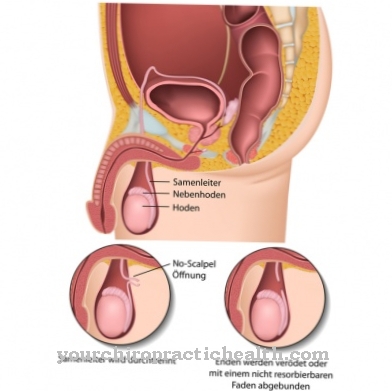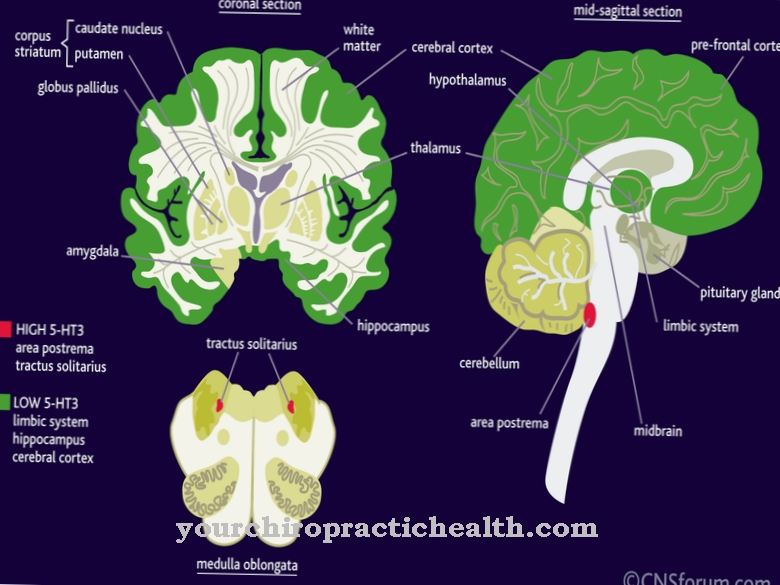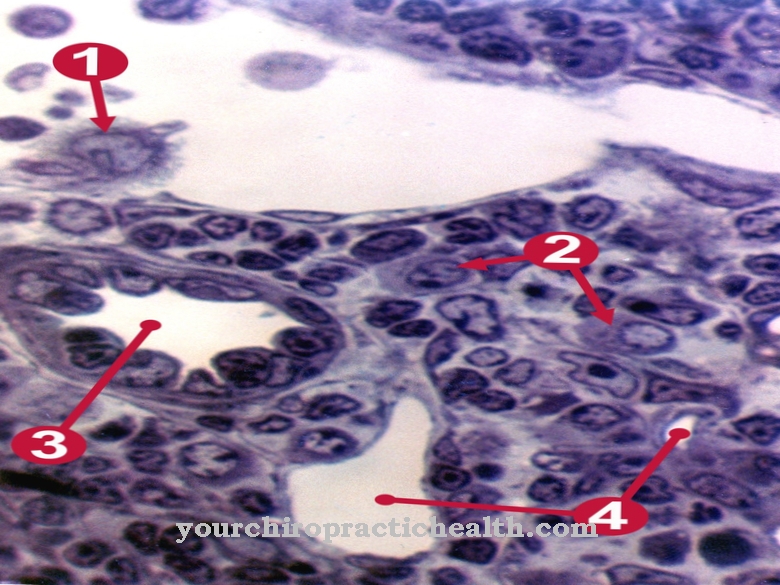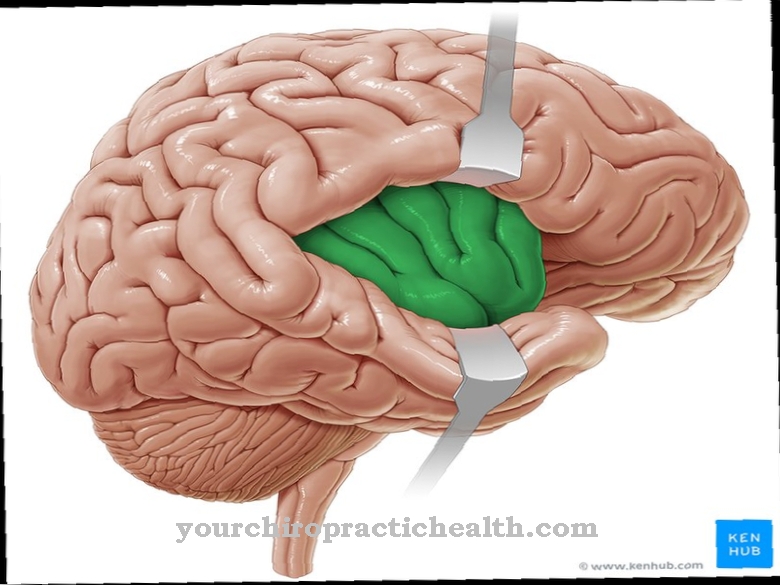Nerve tissue is organized in a network of glial cells and neurons. While the nerve cells serve as the conduction of excitation, the glial cells take on organizational functions. Inflammation, necrosis and masses in the nervous system can cause permanent damage to nerve tissue.
What is the nerve tissue?
The anatomy understands nervous tissue to be networked neurons or nerve cells. Glial cells are connected between the individual neurons and connect them to the capillaries. This network-like tissue is mainly found in the brain and spinal cord, but also in the gastrointestinal tract and the retina. The color of the fabric is between pink and white. The cross-linking in the gray matter is higher than that of the white matter.
The nerve tissue is used for the selective transmission of excitation to the organs. These organs produce certain effects on the neural impulse. In addition to nerve tissue, the main types of tissue include muscle tissue, connective tissue and epithelial tissue. The nerve tissue is the only one of the basic tissue types that consists of network-like connected cells.
Anatomy & structure
Glial cells and nerve cells are the components of nerve tissue. The individual connections in the nerve tissue are interconnected. Here, excitations are transported at a speed of up to 350 kilometers per hour on embossed tracks. Glial cells correspond to either astrocytes and oligodendrocytes or Schwann cells, ependymal cells, microglia and satellite cells.
Astrocytes sit at the contact points between the neurons and the bloodstream. Astrocytes leak into many cell processes that feed several nerve cells. They are distributed around the synapse and each neuron is connected to several astrocytes. Schwann cells are only found in the peripheral nervous system. Astrocytes and oligodendrocytes, on the other hand, form the supporting structure of the central nervous system. Microglia such as the Hortega cells only connect the neurons in the central nervous system.
Function & tasks
The neurons of the nerve tissue are responsible for processing and transporting neuronal excitation. They take over the function of an excitation conduction. The impulses in the neural network run on predetermined paths. They branch off to other neurons in the nerve tissue, coincide with the impulses of certain neurons or inhibit individual nerve cells. The neuroglia or glial cells of the nerve tissue perform auxiliary tasks in this system.
On the one hand, they form the supporting structure of the neurons. On the other hand, they are responsible for their nutrition and the maintenance of the biochemical level that the nerve cells need to work. The functions of glial cells have not yet been fully understood. In the beginning, science assumed a cement substance that only connects the neurons. In the meantime, research has recognized a fraction of the diverse tasks. Glial cells, for example, produce substances that the nervous system needs for nerve function. They also transport metabolic products away, dehydrate and act against invading microorganisms. In addition, the glial cells set the pattern for the nerve functions.
This is how they organize the nervous system because the neurons follow the given pattern. Neuroglia, for example, indicate the pathways on which nerve impulses travel through the brain. The cells are also involved in the formation of synapses. The organizational activities of the glia culminate in so-called weeding. The cells remove neurons that do not integrate into the frequented pathways. They loosen seldom used webs and solidify much used ones. So the nerve cells are the conduction of excitation, but the glial cells determine the pathways of this conduction. This means that the tasks of the cell types in the nerve tissue are closely interlinked. Glial cells and neurons complement each other. The neurons provide the service that is organized by the glial cells. So to speak, the Neuroglia appear as managers of the neurons.
Diseases
If the drainage function of the astrocytes is disturbed, cerebral edema can form in the central nervous system. Liquid accumulates in the brain. This can happen, for example, as part of an inflammation in the central nervous system. Brain edema is a serious condition that can lead to brain death. The blood supply to the brain can be interrupted or at least made more difficult by the increasing intracranial pressure. Treatment of this phenomenon includes draining the CSF from the external CSF space.
The pressure on the brain is reduced in this way. Drug drainage of the brain is also conceivable. An equally threatening disease is the so-called glioma. Various tumors of the central nervous system are summarized under this collective term. In addition to astrocytomas, oligodendrogliomas also belong to the group of gliomas. These tumors are the most aggressive type of brain tumors and are among the most common. Nervous tissue can also be damaged by primary diseases such as diabetes. Sugar can accumulate in the tissue as part of the disease. This substance acts as a neurotoxin in the nerve tissue. Polyneuropathies with impaired sensation are the result. Necrotizing diseases of the nervous tissue are also not uncommon.
Central nervous system syphilis, for example, is often associated with necrotizing effects on nerve tissue. Ischemic damage to the central nervous tissue, on the other hand, occurs in brain cysts, for example, since these masses can interrupt the blood supply via the cerebral arteries. Inflammatory damage to the nerve tissue is again present in the inflammatory autoimmune disease multiple sclerosis. The function of specialized nerve cells cannot be taken over by neighboring cells after their demise. However, since undifferentiated neurons migrate permanently into the brain region, the regeneration of nerve tissue is still possible to a certain extent.

























.jpg)

.jpg)
